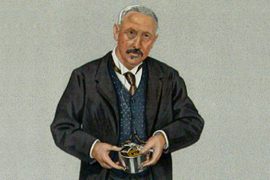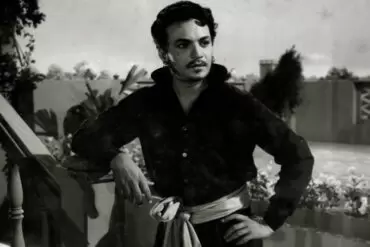A good friend recently said, “I think I’ve always been prone to melancholy,”; I thought, “yes, me too.” If this is also you, I advise against watching EO in a public place, for example, a long-haul flight. But watch it, you must – melancholic or not.
There are images we carry around in our (sub)-conscious that flicker on and off, like those from old style film projectors. One of my images is of driving on the newly built road connecting Nairobi to Mombasa. Along the sides of the road were lone donkeys, their backs turned to the oblivious traffic. They stood still. Traumatised and displaced; acres of land they had grazed on was razed down for the road. A report predicted that at current rates of slaughter in Kenya for the Chinese export market, the entire donkey population would be depleted. I thought of them, when I watched EO, the name of the lead character, a donkey. EO’s large, deep, dark, eyes are haunting. Long after the film, I still see them clearly.
EO’s story starts in the Polish Circus, where, Kasandra, who, performs tricks with him, loves him. They are ripped apart as the Circus is closed down; a triumph of well-intentioned campaigners, fighting to stop cruelty against animals, and, no better symbol of this than the forced performance of animals in the Circus. As EO’s journey unravelled, I couldn’t help but feel that maybe he would have been far better off in the Circus with Kasandra. Maybe, he would have lived. Sorry – belated spoiler alert. To be clear, I am in no way advocating for circuses.
What is it about this film that makes us pause? Perhaps it humanises or connects us directly to the life of just one animal, in traditional storytelling format. And perhaps this one life epitomises the lives of millions of animals that are suffering, through destruction of their habitats; for human settlements or our insatiable need for food, energy and resources. The figures on loss of biodiversity continue to be depressing. In 2019, the IPBES reported, ‘of an estimated 8 million animal and plant species (75 percent of which are insects), around 1 million are threatened with extinction—more than ever before in human history.’
The numbers are too overwhelming, too vast and abstract to make sense of, but the film forces us to connect to this one sentient being, when it is all too easy for many others to silently pass by. Another image that I carry around, is of a dog, in the middle of the road from Sanga Reddy to Hyderabad. It had been hit by the traffic; the body in the middle of the carriageway with its organs beside it. The traffic was speeding past. We too sped past it. I wish I had stopped, at least to give it the burial it deserved.
In a small village called Mal Ankaliya, an hour away from the city of Baroda in the State on Vadodara in India, I see a mother monkey with its baby clinging to its chest, moving on the side of the road, where some trees, shrubbery, remained. It was a lone twosome. Despite the religious reverence of monkeys in Hinduism, species such as the Bonnet Macaque, have declined, ‘by more than 65 percent over the past 25 years,’ driven by the changes to, ‘the roadsides [that] have drastically changed where vegetation has been replaced with barren lands and urbanization.’
After the Circus shuts down, EO, is taken to a farm, which houses horses. Beautiful white and hazelnut brown equines, glow with importance. They run around majestically, and are washed down lovingly. EO stands at the edges, overlooked, almost invisible; treated as lesser than these beauties. He is neither happy, nor sad, he just is.
At the horse sanctuary, Kasandra, comes to see EO. Distraught though she is, she walks away; her boyfriend and his motorbike won’t wait too long for her. After she leaves, EO, breaks down the fence, and wonders, through the forest. Maybe he is going after her, maybe not. It is dark, the noises of the forest, unsettling. Suddenly, lasers surround him; they miss him, but the wondering wolf is not so lucky. The dead carcass of the wolf is in the stream in front of him. He carries on until he reaches a village, then ends, up on the edge of a football field. He is adopted as the mascot by the fans of the winning team; they take him to the local drinking hole where he is surrounded by their drunken celebrations. The fans of the losing team descend on the celebrations, hitting the humans they despise with batons; EO who quietly escaped to the side of the building, sadly, did not travel far enough out of their reach.
He is taken to a clinic, and treated by the vet. He survives. Is this a reflection of all our conservation efforts to save wildlife? That the wider machinery of society inflicts wounds on a mass scale; for some of the small pieces to be put back together by the few? Despite public sentiment against it, and public campaigning, intensive factory farming is on the rise in developed and emerging markets.
The 2020 Australian blaze, said to be made worse by human induced climate change, killed or displaced three billion animals; a few videos of some koalas and kangaroos being rescued were all we had for consolation. We have yet to understand the excess loss of wildlife from the Canadian wildfires, as a result of climate change. As the biodiversity crisis deepens, how much can we save, unless the system is disrupted, overhauled?
EO’s ending is not a happy one. He wonders into a cattle ranch, and is moved along with the cattle into the slaughter house. NO, No, no! If we could crawl into the film and take him out of the ranch into safety, we would. For now, there is no choice but to seek respite in the faint slivers of light; the UK Government passed the Animal Welfare (Sentience) Act which recognises and protects the rights and welfare of animals as sentient beings; the United Nations Biodiversity Conference (COP15) ended with an agreement to halt and reverse nature loss, including putting 30 percent of the planet and 30 per cent of degraded ecosystems under protection by 2030; Scotland is the latest country to launch a re-wilding programme.
In a very small way, I left my garden un-mowed this year. It is now a mini-urban jungle. I have noticed twice the amount, of bees, as last year and for the first time, dragonflies. I continue my donations to large, international and smaller, local wildlife trust charities. It feels feeble, far from enough.
EO has a long list of accolades, including winning the Jury Prize at Cannes Film Festival. It shines a light on our deep connection to animals and nature; that we feel their suffering, that we need to keep going to overcome apathy and despair, to protect what we can, even if, it feels insurmountable.
-30-
Copyright©Madras Courier, All Rights Reserved. You may share using our article tools. Please don't cut articles from madrascourier.com and redistribute by email, post to the web, mobile phone or social media.Please send in your feed back and comments to [email protected]











